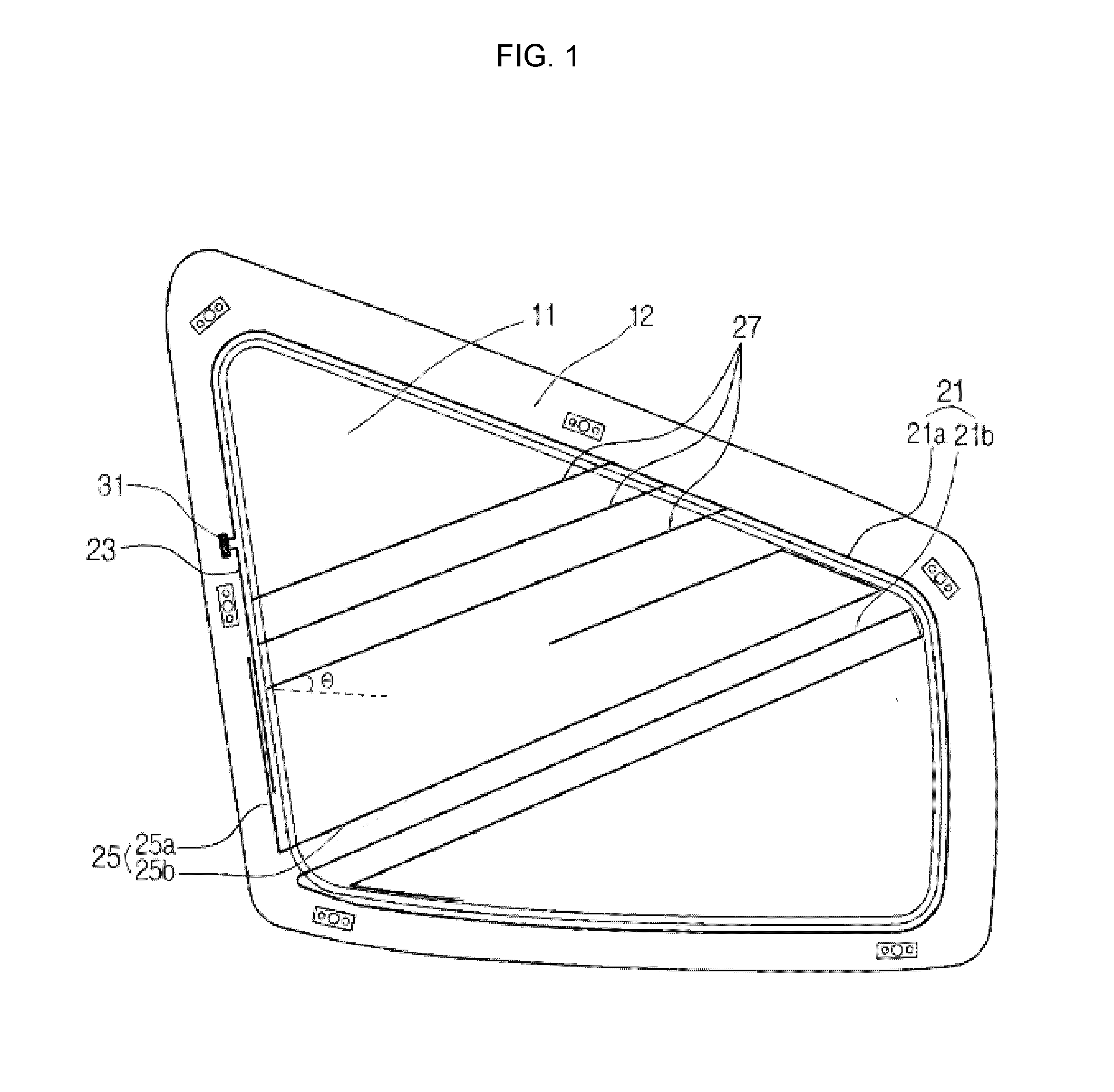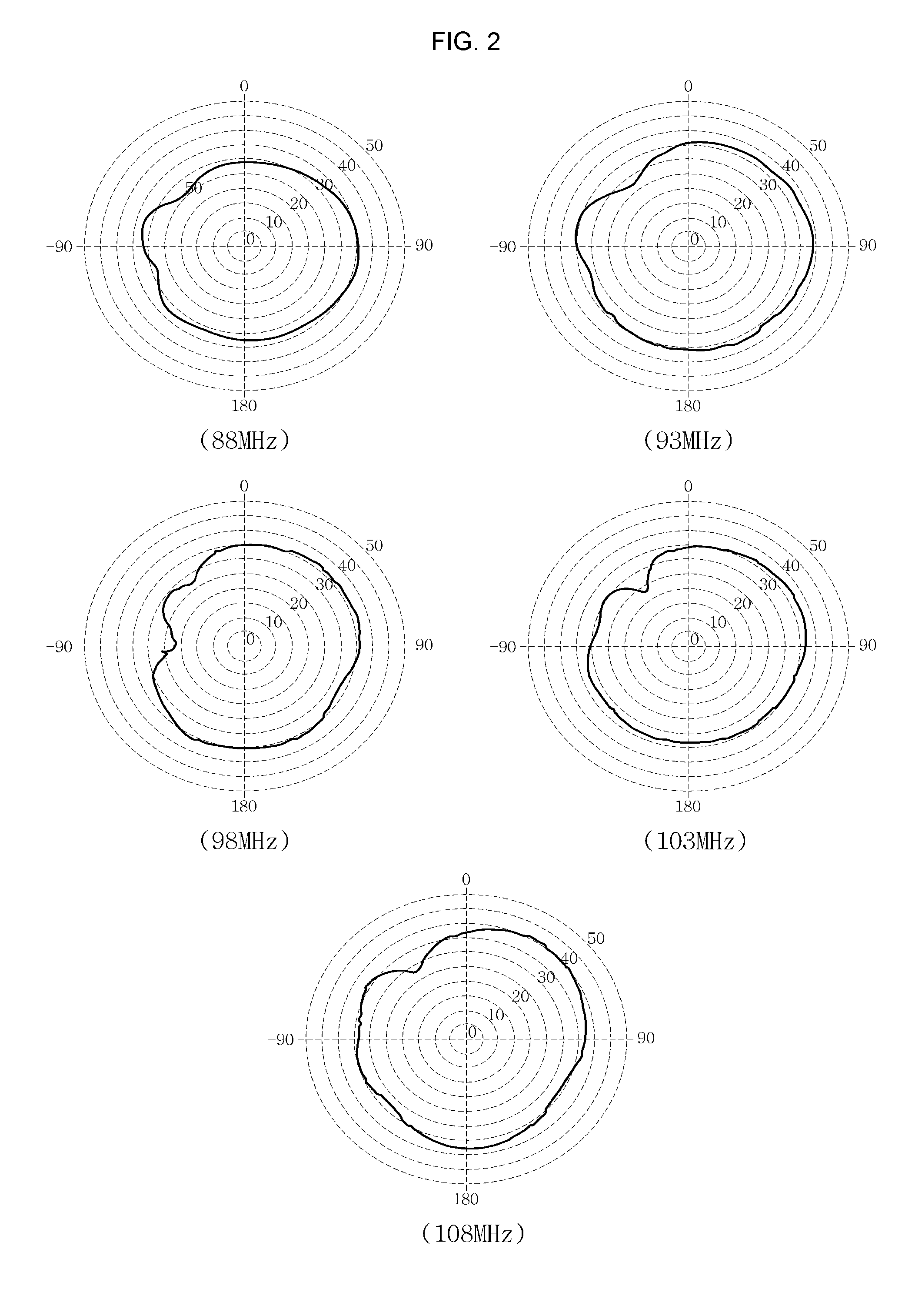Glass antenna for vehicle
a technology for glass antennas and vehicles, applied in the direction of antennas, antenna details, antenna adaptation in movable bodies, etc., can solve the problems of deteriorating the electric wave receiving rate, cracking and snapping, and the reception performance of glass antennas is very poor, so as to improve the directivity of antennas, improve the reception sensitivity, and adapt the effect of antenna length
- Summary
- Abstract
- Description
- Claims
- Application Information
AI Technical Summary
Benefits of technology
Problems solved by technology
Method used
Image
Examples
Embodiment Construction
[0025]Hereinafter, the present utility is described in detail with reference to the attached drawings.
[0026]Before the detailed description, it should be noted that the terms used in the present specification and the claims are not to be limited to their lexical meanings, but are to be interpreted to conform with the technical idea of the present utility under the principle that the inventor can properly define the terms for the best description of the utility made by the inventor.
[0027]Therefore, the embodiments and the constitution illustrated in the attached drawings are merely preferable embodiments according to the present utility, and thus they do not express all of the technical idea of the present utility, so that it should be understood that various equivalents and modifications can exist which can replace the embodiments described in the time of the application.
[0028]FIG. 1 is front view of glass antenna for vehicle according to present utility.
[0029]Referring to FIG. 1, g...
PUM
 Login to View More
Login to View More Abstract
Description
Claims
Application Information
 Login to View More
Login to View More - R&D
- Intellectual Property
- Life Sciences
- Materials
- Tech Scout
- Unparalleled Data Quality
- Higher Quality Content
- 60% Fewer Hallucinations
Browse by: Latest US Patents, China's latest patents, Technical Efficacy Thesaurus, Application Domain, Technology Topic, Popular Technical Reports.
© 2025 PatSnap. All rights reserved.Legal|Privacy policy|Modern Slavery Act Transparency Statement|Sitemap|About US| Contact US: help@patsnap.com



